Art & Resistance: Through a Feminist Looking Glass
VIEW EVENT DETAILSThursday, 31st August, 6:00 p.m. - 7:30 p.m
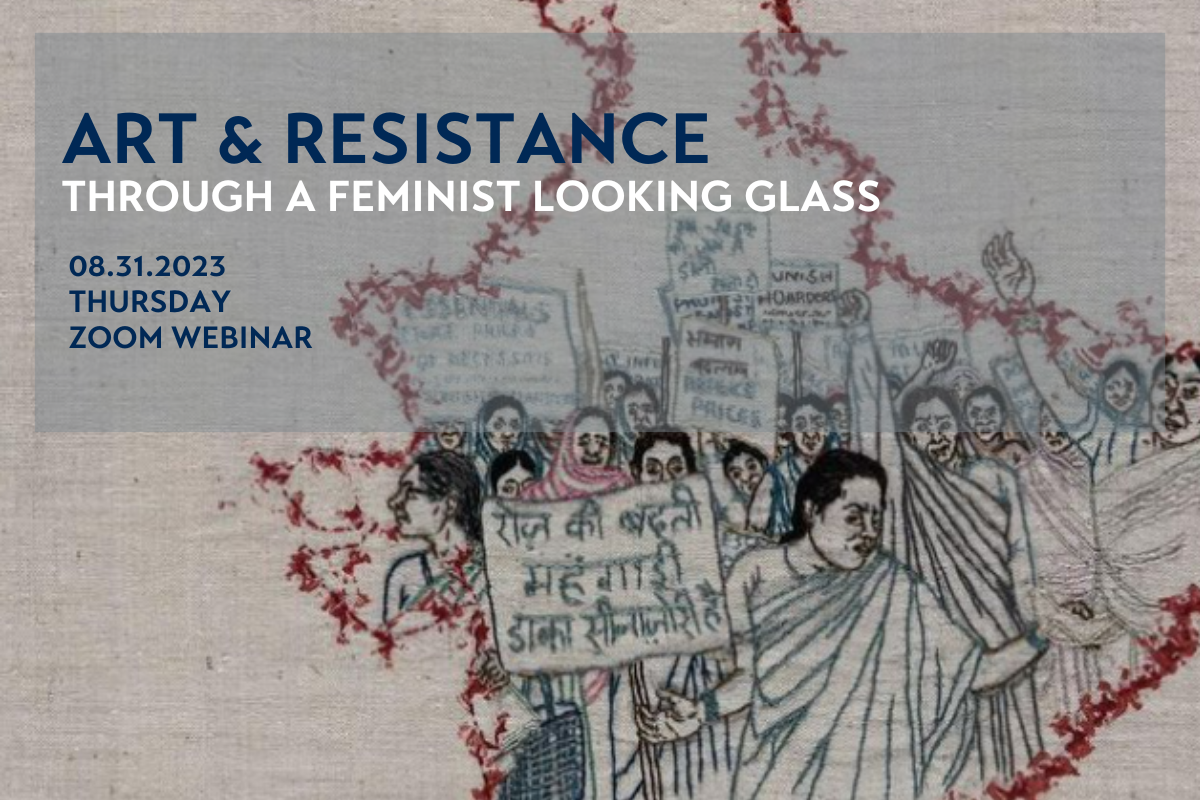
Artwork in creative from “We, The People” series by artist Varunika Saraf, 2018-2019; courtesy of the artist and Chemould Prescott Road.
When in 1949 revolutionary French author Simone de Beauvoir wrote her magnum-opus ‘The Second Sex’, her note of introduction began with some hesitation. She wondered if enough hadn’t already been said about the “eternal feminine”. Countless years, feminist movements, economic development and socio-political manoeuvres later, the situation only continues to look further grim for women, particularly the gendered history of war and conflict. This is true for women with lived realities in Manipur, Afghanistan, Rakhine state in Myanmar, Sri Lanka, China, Latin America and everywhere else across the world; regardless of nationality, regardless of the nature of conflict.
Kamala Bhasin and Ritu Menon bolster the need for a representative history that can only be pieced together “if the experience and status of one half of humankind is an integral part of the story”. At Asia Society India, we recently concluded a series called Lands, Borders and People, a four-part investigation into the issues of migration and refugees in South Asia. As a postscript to that series, this webinar titled ‘Art and Resistance: Through a Feminist Looking Glass’ goes beyond the politics of displacement to look more broadly at the intersection of gender, conflict and resistance in art and literature, with a focus on the perspective of women.
How do gender relations shape the ways in which women engage, are affected by, and seek to resolve conflict? As per the United Nations Development Fund for Women’ hypothesis, can a gender lens on conflict analysis make a significant contribution to conflict prevention? And what is the role of art and creative expression in giving voice to the experience of gendered reality?
The panel brings together artists from across borders and creative practices including Varunika Saraf, contemporary artist and art historian from India; Leesa Gazi, writer, theatre-artist and filmmaker from Bangladesh; Farah Bashir, photojournalist and author from Kashmir; Ruby Chishti, sculptor and installation artist from Pakistan (currently in America); and Anomaa Rajakaruna, documentary filmmaker, photographer and curator from Sri Lanka, for a conversation that will be moderated by Pragya Tiwari, writer and founder of Oijo, a culture and brand consultancy. Through this discussion, we aim to spotlight artistic voices from South Asia and the diaspora who have centred their practice on feminist narratives of identity within the historical and contemporary fault lines of displacement, migration, violence, exile and resistance.
Join our panelists as they present their diverse perspectives, and collectively raise questions around the missing voices of women in dominant narratives related to displacement and resistance , through the lens of arts and culture.
To register your interest for this webinar, please follow this link.
SPEAKERS
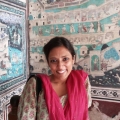
Dr Varunika Saraf is an artist and art historian based in Hyderabad. Saraf has participated in several group shows such asSangam/Confluence, Heidelberger Kunstverein (2020), Critical Constellations, Foundation for Indian Contemporary Art, New Delhi (2019), Days Without a Night, Max Mueller Bhavan, New Delhi (2018), and Phantoms of Asia, Asian Art Museum, San Francisco (2012). In 2016 Saraf received the Amol Vadehra Art Grant. She was also the Summer Research Fellow at the Getty Research Institute, Visiting Fellow at the Max-Planck Institute, Florence, NTICVA Visiting Fellow at the V&A Museum and the CWIT fellow at the Centre for South Asian Studies, University of Cambridge. Saraf holds a PhD and an MPhil in Visual Studies from the School of Arts and Aesthetics, JNU, and an MFA in Painting from S. N. School, University of Hyderabad. She is represented by Chemould Prescott Road where she recently mounted her third solo show Caput Mortuum. In her recent work, Saraf draws upon “apocalyptic manuscripts”, particularly the Augsburg Wunderzeichenbuch, a 16th century manuscript from Bavaria. She uses the medieval imagery of interpretations and revelations to develop a language that allows us to process violence, phenomena, and socio-political upheaval. She was also one of the 150 artists from over 70 countries selected for the Sharjah Biennial.
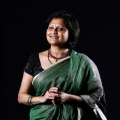
Leesa Gazi is a British Bangladeshi writer, theatre worker, award-winning filmmaker & Joint Artistic Director of the arts company Komola Collective. She has dedicated her career to presenting stories told from women's perspectives. She is best known for the Rising Silence documentary, a film shedding light on the lives of rape survivors of the Liberation War of Bangladesh and based on the stories collected by Leesa's personal encounters with over 80 survivors in Bangladesh. The film was vastly acclaimed and won 15 awards worldwide. Hellfire, an English translation of Gazi's critically acclaimed debut novel Rourob, will be published in Europe and USA in 2024. Currently, Gazi is completing her debut fiction film, Barir Naam Shahana - A House Named Shahana, which won 'FBR Winner 2021 - Feature' at the NFDC Film Bazaar. Gazi is a founding member of SEMA, the Global Survivors Network established by Dr Denis Mukwege Foundation in 2017 as a part of the Collective Memory Group.

Farah Bashir is the author of Rumours Of Spring: A Girlhood in Kashmir. She used to work as a photojournalist with Reuters. Currently , she is working on her novel — a group portrait of women — at the university of East Anglia.

Ruby Chishti is a Pakistani American sculpture and installation artist, based in New York City. Formally educated in the National College of Arts, Lahore. Her haunting and enigmatic sculptures perform the passage of fabric from discarded massproduced and ceremonial clothing to the reconstruction filaments of artistic imagination. Her practice involves audio-visual installations and experimentation in melding the fabric of found garments and social memory and the artistʼs complex history of trauma from unexpected family losses and the wanton destruction of her Pakistani home to the survival of migration and her persistence through transitional impediments. Ruby has held residencies at home and abroad; in 2018 as a Critic in Residence by Fiber Science & Apparel Design, College of Human Ecology at Cornell University Ithaca and VSC/Pollock Krasner Fellowship 2022. Her installations, sculptures, and sitespecific works have been exhibited at Asia Society Museum NY, Queens Museum, Harris Museum Preston, UK, Hudson Valley MOCA, Middlebury Museum College Of Art,VT to name a few. Her major works are in permanent collection of Qatar Museum, Kiran Nadar Museum of Art, Devi Art Foundation and Whitworth Gallery, London.
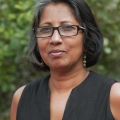
Anomaa Rajakaruna has travelled extensively in Sri Lanka documenting the lives of community groups, particularly the lives of women and children for over 30 years. She has addressed issues such as women in armed conflict, displacement and violence against women and has won several awards for her work both nationally and internationally. She is the first female editor of a cinema journal in Sri Lanka and edited Chithrapata, a Quarterly Cinema Magazine published by the National Film Corporation of Sri Lanka and since 2011 she edits a Quarterly Cinema Journal, 14 - Prakashanayata Awakashayak.
Rajakaruna is the Festival Director of Jaffna International Cinema Festival (since 2015), and Founder of Agenda 14 Short Film Festival (2011) in Colombo.
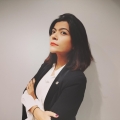
Pragya Tiwari is a strategy and culture consultant, Creative Director of Oijo and co-founder of the Indian History Collective. As a journalist she has written extensively on politics, identity, policy, and culture and has edited several publications, including Tehelka, The Big Indian Picture, and Vice.